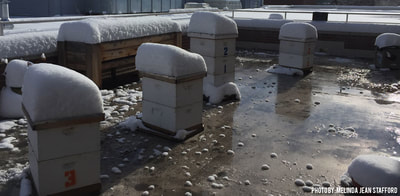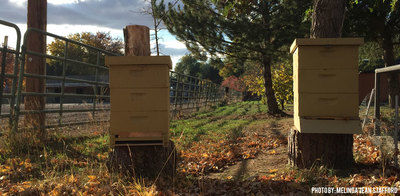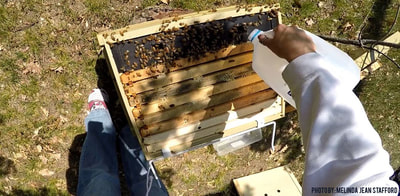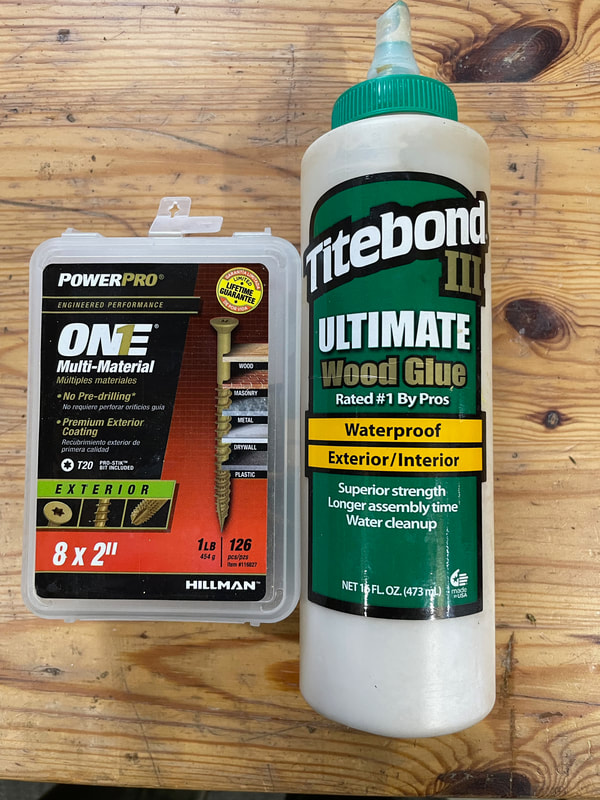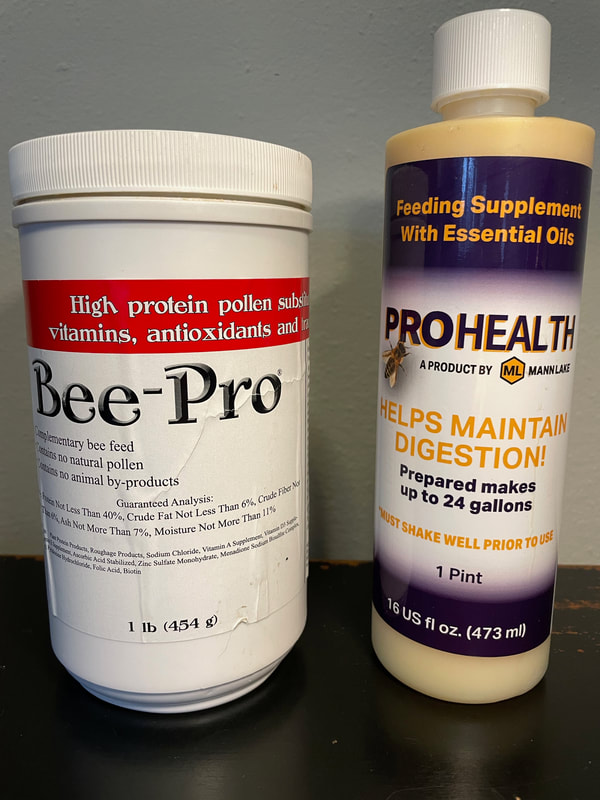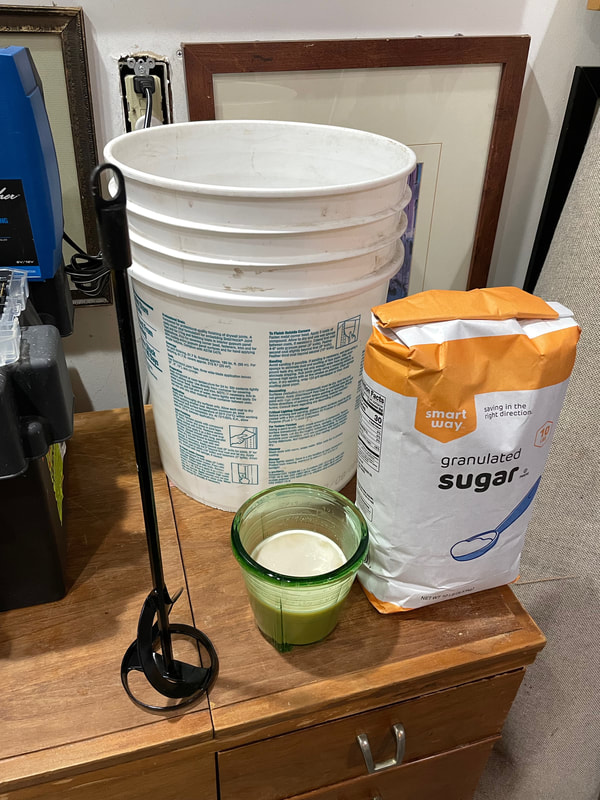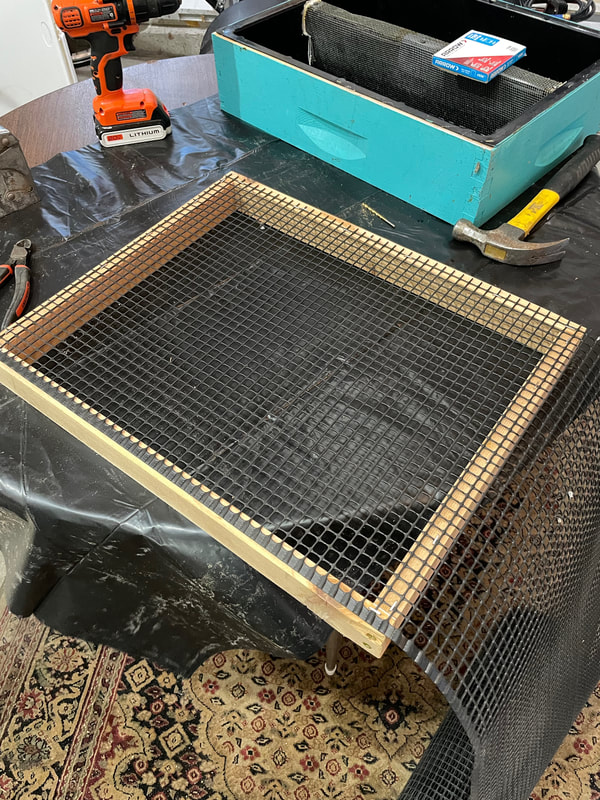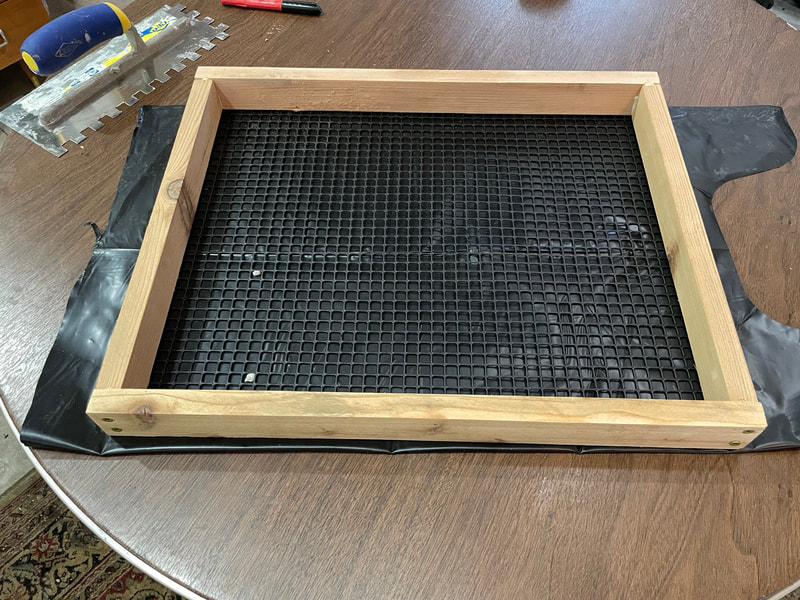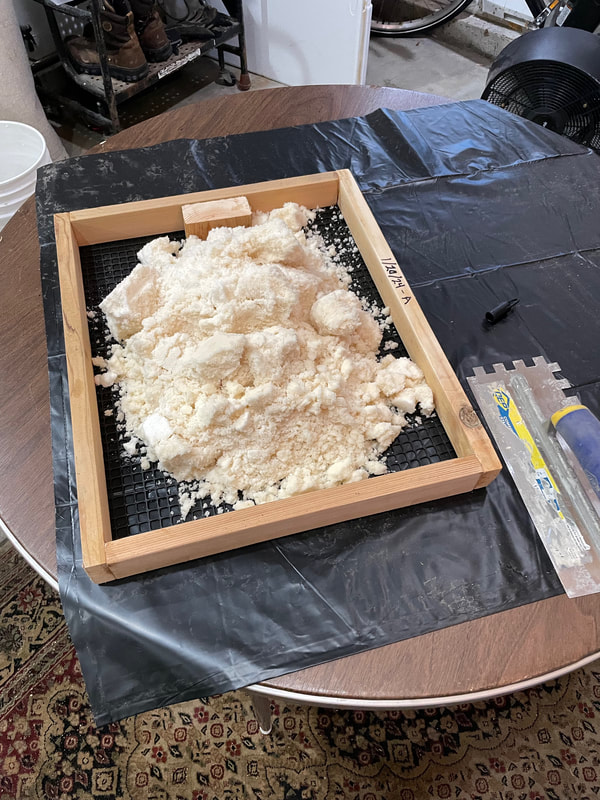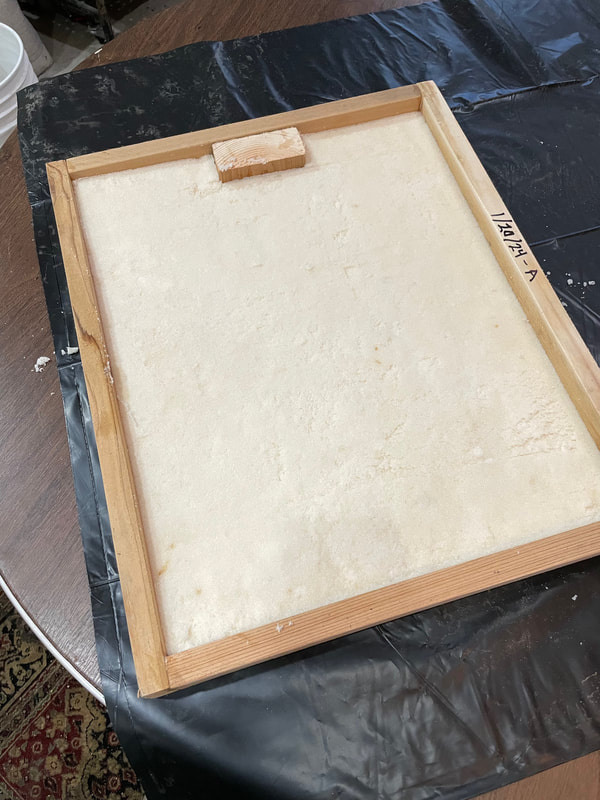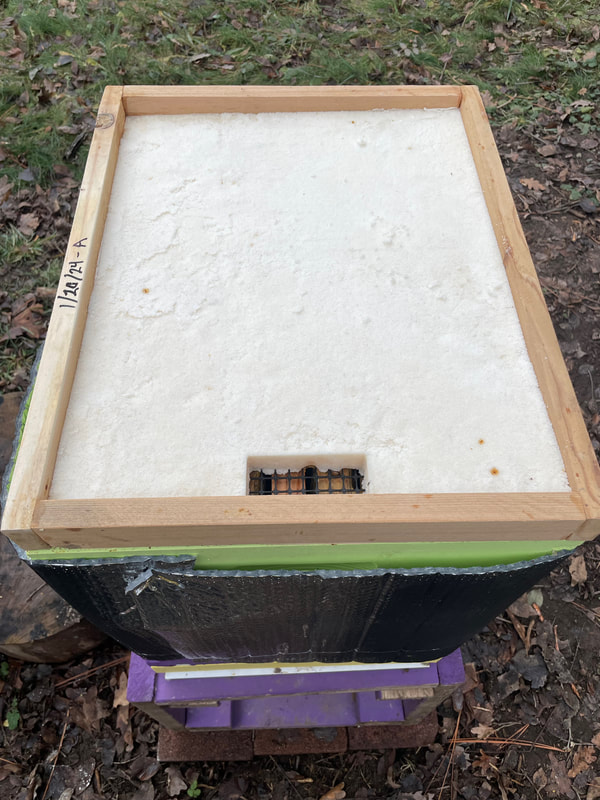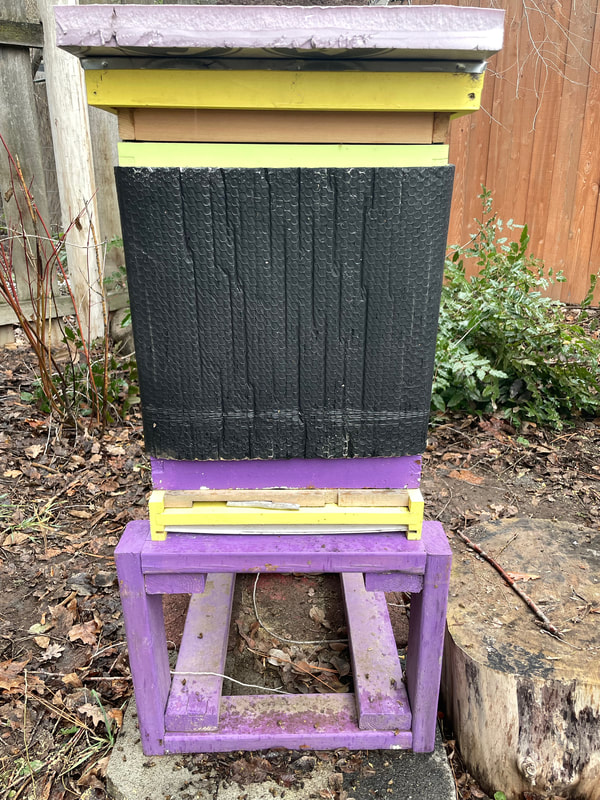Wintering
Wintering Bees in Cold Climates
Keeping bees is an agricultural endeavor, thus, success as a beekeeper depends on understanding the local environment. This guide was written for beekeepers whose bees overwinter in cold climate. To care for colonies with a prolonged winter confinement period, you must learn how to recognize and promptly deal with colony health and queen problems during the summer and fall, with an eye to ensuring that colonies enter winter dormancy in the best possible condition. This point cannot be overstated: Good fall management is critical to successful overwintering! Fall management begins prior to the end of the last nectar flow and falling temperatures that would preclude mite treatments and supplemental feeding. To ensure your bees survive the winter, they must:
- Be healthy and mite free. Thanksgiving is a good time for a final mite treatment. Oxalic acid vapor is a popular treatment our experienced club members use.
- Be well ventilated. Have you ever camped in a small tent and notice how much moisture there is inside when you wake up in the morning? Bees respirate water vapor too and this water must be allowed to escape, or condense on the walls of the hive. If it cannot get out, your bees will get wet and in the winter, wet bees are dead bees. If it snows, be sure to check your hive entrances to ensure they are not blocked by the snow.
- Be protected from the wind. Bees will naturally do a good job of generating heat and staying warm. The subject of insulating a hive is one continually debated in our club. The one thing most beekeepers agree on, however, is to protect your hives from the wind. Your apiary should provide natural wind protection if possible and if not, you can add barriers.
- Have enough food. An easy, non intrusive way to monitor this is by weighing your hive in the fall. Then weigh it every couple of weeks or at least once a month during the winter. If you notice it getting a lot lighter, they are probably running out of honey. If they get low on food in the hive, see the next section on providing winter bee food.
Winter Bee Food
There are several options for feeding your bees during the winter and spring if they are running low on hive honey and they can't yet find wild sources of nectar and pollen.
No Cook Candy Board
Thank you to club member David Pook for this very easy method.
Materials and Ingredients for One Candy Board
Pictures of the process...
- Internal or external liquid feeders. These will only work when apiary temperatures are above freezing.
- Plain white sugar. Sugar, added to the inner cover can be an acceptable short-term, emergency source of food for your bees. It is cheap, fast to deploy, doesn't require opening your hive and is easy to monitor for consumption.
- Cooked or no-cook candy boards. This approach entails using a very shallow frame with a porous bottom in which a mix of sugar, water and perhaps other ingredients are added. The candy board is added to the top hive box and covered. It is arguable the best approach to feeding, as it provides an easily digestible food source for the bees. The downside is that you need to fully open your hive to install the candy board and it can be hard to see if they are consuming it from the bottom.
No Cook Candy Board
Thank you to club member David Pook for this very easy method.
Materials and Ingredients for One Candy Board
- 1" x 2" lumber and eight #8x2" wood screws and some wood glue for constructing the frame
- 2" x "4 x 2" piece for making a vent in the candy board
- A tile trowel for smoothing the sugar into the frame
- 1/4" Wire cloth or plastic mesh for the bottom of the frame to keep the candy in place.
- 10 lb bag of white sugar
- 1/4 cup of pollen substitute
- 2-4 drops of Honey Bee Healthy or ProHealth feeding supplement with essential oils
- 1 cup water
- Build the frame.
- The easiest thing to do is get to get a honey super box and measure and cut your boards to match.
- Pre-drill screw holes, add wood glue at the joints and screw together. Corner clamps really help make this easy.
- Staple the mesh to one side of the board and trim the mesh flush with the outside of the frame.
- Turn the board over (mesh side down) and place on top of a piece of cardboard or plywood covered with a trash bag. This will make it easy to move the board while its drying and to keep the sugar from sticking.
- Put the 2" x 4" x 2" plug in the center of one of the short sides of the frame. This will make the vent.
- Mix up the candy
- Dump the 10 lb bag of sugar in a 5 gallon bucket.
- In a two-cup measuring cup add the pollen substitute, feeding supplement and water and mix up.
- Add the water with pollen substitute and supplement to the bucket of sugar.
- Mix well. This is easy to do with a paint stirrer on a drill. When well mixed the sugar should turn a light shade of yellow from the pollen substitute and feeding supplement.
- Dump the sugar mix into the frame and use the trowel to press the sugar into the sides and even out. It should be pretty level across the surface. Push the trowel into the sugar all around to firm up the sugar.
- Let it dry in a warm place for a day or two.
- Install the board in a hive
- Remove the 2" x 4" plug and you'll have a nice vent hole.
- Stage the board by the hive you'll be adding it to.
- Remove the hive cover and inner cover.
- Clean any burr comb from the tops of the exposed frames.
- This is an excellent time to do a quick inspection looking for bee activity and to see how much honey is left on the upper frames.
- Place the candy board onto the frames, with the vent toward the back. That will allow good ventilation from the front entrance to the back of the hive.
- Replace the inner cover and hive cover.
- Go enjoy a nice beverage knowing your bees should have a good supply of food to get them by until they can forage for wild food.
- Do check your board periodically to see if it's being consumed. In some cases you could need another.
Pictures of the process...
Feeding in Winter
by Marc Von Huene
Winterization Guide |
Overwintering a Nucleus Colony |
|
Here is a guidebook for winterizing your bees written by:
Eliese Watson at Apiaries and Bees for Communities in Alberta, Canada www.backyardbees.ca |
Oregon State University published a report on overwintering a nucleus colony:
https://catalog.extension.oregonstate.edu/sites/catalog/files/project/pdf/pnw682_2.pdf |

